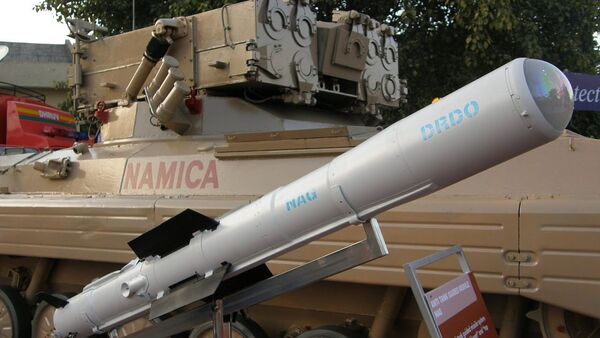Amid a massive deployment of weapons systems along its northern border, India has successfully test fired a helicopter-launched third generation anti-tank guided missile, HELINA, in Balasore, a city in the state of Odisha, in full attack mode for its 7 km range.
Developed by the country’s Defence Research and Development Organisation (DRDO), the missile mounted on the advanced light helicopter is guided by an infrared imaging seeker, which provides day and night operational capabilities against low-silhouette tanks, both static and fast moving.
India test fires helicopter-launched third generation anti-tank guided missile, developed by @DRDO_India to engage highly fortified enemy tanks in all-weather condition. pic.twitter.com/MMHwT6uLvY
— Aakriti Sharma (@_aakritisharma) July 22, 2020
“The system has all weather day and night capabilities and can defeat battle tanks with conventional armour as well as explosive reactive armour. The HELINA missile can engage targets both in direct hit mode as well as top attack mode,” the DRDO said while adding that a variant of the HELINA Weapon System called DHRUVASTRA is being inducted into the Indian Air Force (IAF).
Defence sources said that eight HELINA missiles can be integrated onto a Rudra helicopter, four on each side.
The DRDO has been working on the Nag missile since 2009 and has spent approximately $47 million on its development. As the anti-tank guided missile Nag can be launched from both land and air-based platforms, the strike range varies from 4 km for land-launched missiles and 7km for air-launched missiles.
The Indian army says it requires at least 40,000 anti-tank guided missiles in the next two decades.


